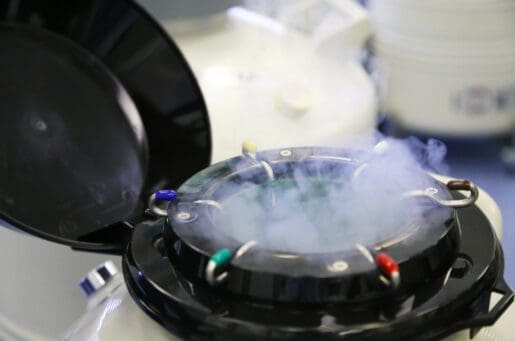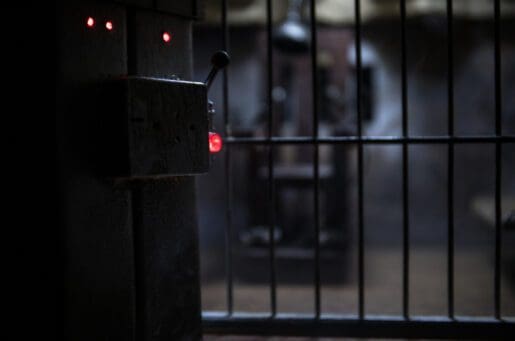Bioethics Forum Essay
This Doctor Experimented on Slaves: It’s Time to Remove or Redo His Statue
“There is a difference between remembrance of history and reverence of it,” Mayor Mitch Landrieu declared to explain the removal of four Confederate monuments in New Orleans in May. The statues were, he argued, part of the terrorism campaign that threatened African American citizens for more than 150 years. Other cities, colleges, and universities are beginning to rethink, or rename, their historical monuments or buildings as well. New York City may not have bronzed paeans to defeated Confederate generals, but it does have a statue to a 19th century southern physician and transplanted New Yorker whom many think of as responsible for the torture of the slaves he bought to use for medical experimentation. It is time to consider anew what do about Dr. J. Marion Sims.
On a quiet side of Central Park on 5th Avenue and 103rd Street, just across from the New York Academy of Medicine in East Harlem, stands the larger-than-life Sims (1813-1883). His 14-foot marble statue, erected in 1894, was the first for a doctor in the United States, and it moved to this site in 1934. He is considered the father of modern gynecology. His claim to inventing the speculum that made possible the visualization of the vagina, and his 1840s surgeries on slave women to correct fistulas in their vaginal walls that allowed urinary and fecal material to continuously drip, made him famous. These tears often happen in very young mothers and from obstructed long labor, or in women with deformed pelvises from rickets, lack of proper nutrition, syphilitic ulcers, or serious infections. While this horrific damage, which leads to further infections, terrible smells, and social isolation, is now seen primarily in parts of Africa, it was a common problem for all women in the 19th century, especially before caesarean sections could be performed safely. They were seen especially frequently as a byproduct of slavery that enforced rape and demanded pregnancy of newly pubescent women.
Sims, born in South Carolina, was practicing in Montgomery, Alabama, when enslaved women with this malady came to his attention. In an effort of surgical bravado, Sims operated on nearly a dozen black women, three of whom we only know as Anarcha, Betsey, and Lucy. In an era when anesthesia for operations was just beginning to be used, and doctors debated whether white women and women of color felt pain as intensely as white men did, these multiple surgeries were done without the benefit of loss of sensation. As Sims himself would declare, “Lucy’s agony was extreme,” and Anarcha endured more than 13 attempts to close her fistula. After years of experimentation, and eventually the proffering of opium to his subjects to lessen their pain, make them less likely to complain, but also keep bowel movements limited, Sims found a way to remove the necrotized tissue and sew up these fissures with silver wire sutures. In 1853, he moved to New York, founded the Women’s Hospital, and became a world-renown celebrity physician who operated on royalty, served as president of the American Medical Association, and aided in the establishment of the first New York cancer institute.
Since the 1960s, however, concern about how Sims rose to his fame, and the women’s bodies he experimented on to do it, have raised serious concerns. His granite pedestal proclaims, “His brilliant achievement carried the fame of American surgery thought the entire world,” and says that the statue is in “recognition of his services in the cause of science & mankind.” Nowhere do we learn of Anarcha, Betsey, and Lucy and the nameless others who made his career possible, except for concerns raised in feminist medical history texts that question the price paid by others for his achievements. At a time, too, when the history of medical experimentation on black bodies is remembered for the mistrust it engenders, should we still be staring up at a slave-owning Sims in all his medical glory? Or should we just understand that this was about the past and that in the end his surgical interventions saved countless lives, including probably those of Anarcha, Betsey and Lucy, from a serious problem that still haunts millions?
Community groups in East Harlem have unsuccessfully petitioned to have Sims removed from his perch as a constant reminder of the silences of the black women whose bodies he operated on, a different form of racial terrorizing from those of Confederate generals. Others have suggested that he be allowed to stand, but that we commission a larger plinth with bronzed imagined bodies of Anarcha, Betsey, and Lucy towering over him. To do so, however, puts these women only in relationship to Sims and fails to give them a history beyond their butchered bodies.
There exists just one imagined well-known image of these women. Anarcha, Betsey, and Lucy are only visible to us in the imagined famous portrait done by painter Robert A. Thom, and commissioned by the Parke Davis pharmaceutical company as part of its Great Moments in Medicine series. These portraits were then sent out as vibrant copies by the millions to doctor’s offices across the country between 1948 and 1961. In the Sims painting, one of the women is kneeling on a table in front of the seemingly thoughtful Sims and other doctors, while the other two women look on from behind a curtain. This imagined tableau suggests that the women are agreeing to be helped and offering up their bodies, or it can be read as their own worry and concern. Their slave status can only be known by their skin tone.
What then? More than pharmaceutical company portraits need to exist. Perhaps it is time to remove the signs on the granite pedestals that announce Sims’ surgical talent in New York, and at least explain to other generations how such success was achieved on the bodies of others. To do so might then gain what Mayor Landrieu wanted: remembrance but not reverence. Isn’t it time for us to think about the bioethics of remembrance too?
Susan M. Reverby, PhD, is McLean Professor Emerita of the History of Ideas and Professor Emerita of Women’s and Gender Studies at Wellesley College, Wellesley Massachusetts, and author of Examining Tuskegee: The Infamous Syphilis Study and its Legacy.













With the limited information provided above, my first thought is that this physician should not be judged on the basis of values and principles that were not widely used in the practice of medicine at the time he did his work on curing vaginal fistulas. He personally was not involved in creating the discriminatory practices that put African American women at jeopardy for developing these fistulas. His work research with these women was aimed at solving a medical problem that they were particularly susceptible of developing because of the way society and not the doctor treated them. Issues of bearing pain during surgical procedures existed for all persons at the time and the potential benefits the subjects obtained were substantial. Also, one cannot say that this is unethical because of a disproportionate burden over benefit that African American women bore because the surgical technique continued to be used for both black and white women.
__________________ should not be judged on the basis of values and principles that were not widely used in ____________________ at the time of _______________________.
I guess everyone but a cannibal can get their own statue then.
That’s patently absurd. Dr. Anderson’s attempt at exoneration is precisely what enabled Sims’ successors (then and now) to replicate similar heinous practices. “Who me?” ethics are weak and contemptible. The psychopathic dissociation of the self from the collective society is clear: “…because of the way society and not the doctor treated them.” In-group/out-group. Dr. Sims nor Dr. Anderson would do this to their own mother. At this late date, the best we can hope for is that Dr. Anderson pick up a copy of Harriet Washington’s book Medical Apartheid, and consider a new set of heroes.
That is excusing a man for experimental surgeries performed WITHOUT anesthesia, but that was ONLY on the slaves. Anesthesia was available at that time, he just chose not to give these women pain relief, because “blacks don’t feel pain”. Tell me, as a doctor, giving one patient 40 surgeries without medication, that you wouldn’t notice any reactions of pain and discomfort? You embarrass yourself.
I believe that while the story told is quite balanced, the comment by Dr. Anderson provides the correct perspective. Every body should be judged by the laws and ideas of the time. E.g. in Nuremberg Nazi physicians who experimented on prisoners of war were judged guilty because there were the evidence given to the court that the idea of the free consent for the experiment did exist at the time of the action. Thus experimentation was inhuman, considered criminal.
The earliest practice of asking the consent from patients is about late 19 century. Long time after (in some places even today) doctors practice (and invent!) medicine on their own understanding of the good for the patient and acceptability of the side effects of the treatment.
I first read about this in a recent book Patient H.M. and I wondered why there has not been a concerted effort to remove the statue. The book goes on to say Dr. Sims bought slaves for the express purpose of surgery. We can’t excuse him because of the culture of his day. There were many in that time who would not have done it. Down with the statue.
Leaving aside the larger crime of purchasing people and treating them as less than human (though why we should have to leave that aside, I have no idea), there’s still a significant reason he should no longer be honored. Even if we were to accept that this practice was not abhorrent at the time, it is definitely known to be abhorrent now. Not only because people are not property, but also because of modern research ethics which were developed and codified after the crimes of the Nazis and after the grossly unethical (though I don’t recall if anyone was tried as a criminal) Tuskegee Syphillis Study here in the US. Would we accept a statue to a German doctor who experimented on unwilling (duh) prisoners in nazi concentration camps, honoring that person as the father of X medical field? I should hope not, though his actions would certainly have been consistent with the values at the time (they were even government sanctioned), they were wrong on every level. The same principle applies here and the statue should be removed to a position of less honor (museum, warehouse, whatever). Perhaps a plaque can take its place, one which describes why he had been honored, what he did that is now considered morally reprehensible, and why his statue was removed. We get to preserve history and teach about ethical conduct all at the same time! What???? Also, no one with such unethical practices should get to retain the label of “father of ______(whatever medical field)”, not without extreme qualifiers at the bare minimum.
This paper from 2006 presents a counter-argument to the revisionist narrative which has built up around this doctor’s legacy. It is certainly true that medical practice was different in the early 1800s, and that anaesthesia was only slowly accepted as being safe enough to use in medical procedures.
https://www.ncbi.nlm.nih.gov/pmc/articles/PMC2563360/pdf/346.pdf
It is also true that a lack of informed consent (as understood today) is not the same as being forcibly operated upon against one’s will, which seems to be implied in many of the criticisms.
It sould seem to me that a more appropriate step would be to honour the brace patients who facilitated this research in the hope of relief from what can only have been a horrendous existence.
In all of the material I have managed to locate on Sims, even his colleagues of the same era thought him cruel and begged him to stop. Let us not fail to mention the experimentation he performed on enslaved infants. He attempted to cure tetanus by shifting their skull plates with a shoe maker’s awl. According to his autobiography, he implies and even states he was on a mission from God, undeterred by the unimaginable pain he was inflicting on people with no say over their bodies. There is enough evidence to seriously question what drove him, and no evidence whatsoever that he ever cured anything.